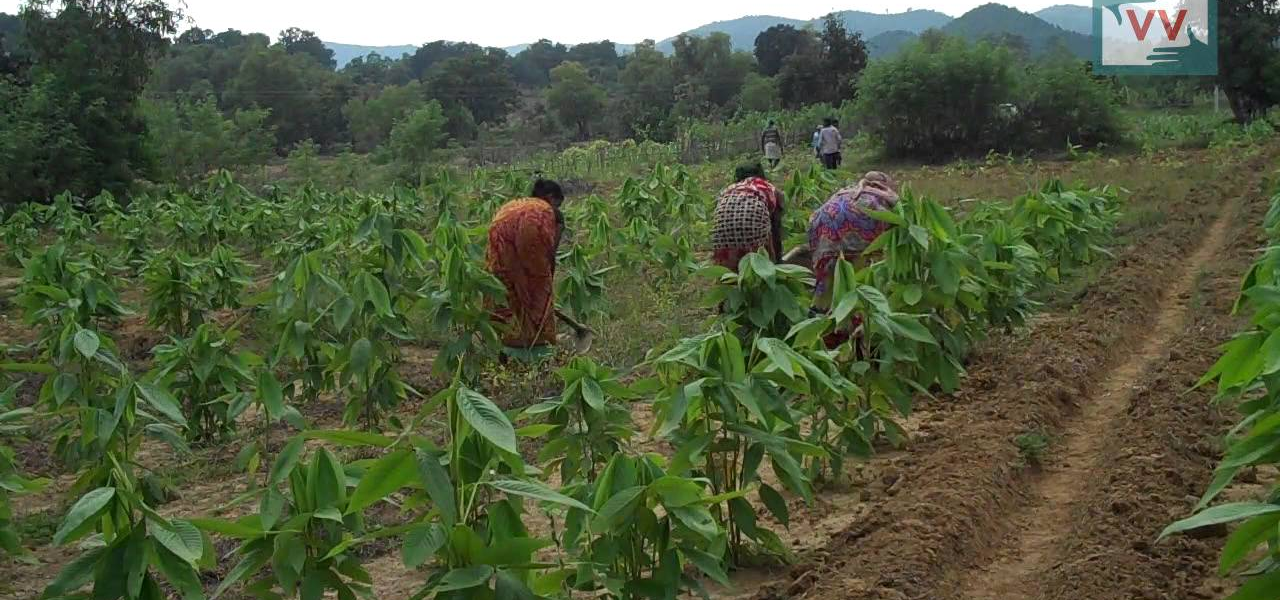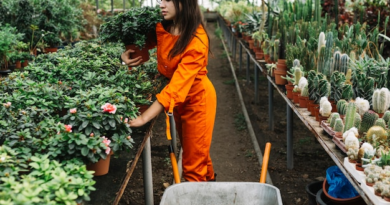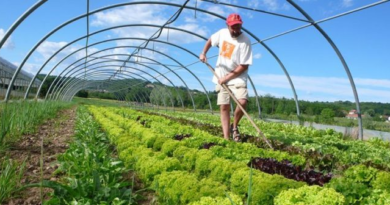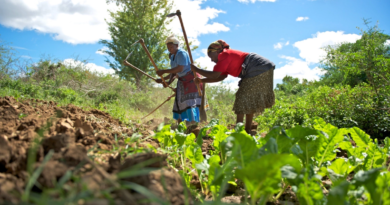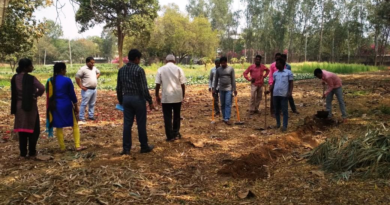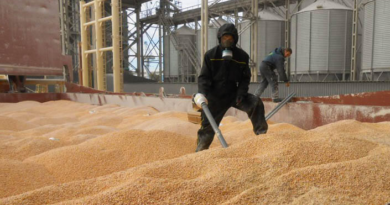Lac Cultivator ( 6 month course)
Lac Cultivator CLICK HERE
One has to ensure good agricultural practices and sustainable harvesting principles to meet quality standards.
Lac Cultivator Short Activity Description: The Lac grower must be able to cut used crops and lac insect cultures from their tender shoots to produce lac using good agricultural practices and to perform basic business activities.
Lac planting should also ensure both environmental and rural development. Your Qualities: Need to get acquainted with flowers and wildlife, be careful, be able to communicate and have an attitude. It can climb trees, and it has a keen eye. There must be responsibility for the outcome of the individual and the work Lac
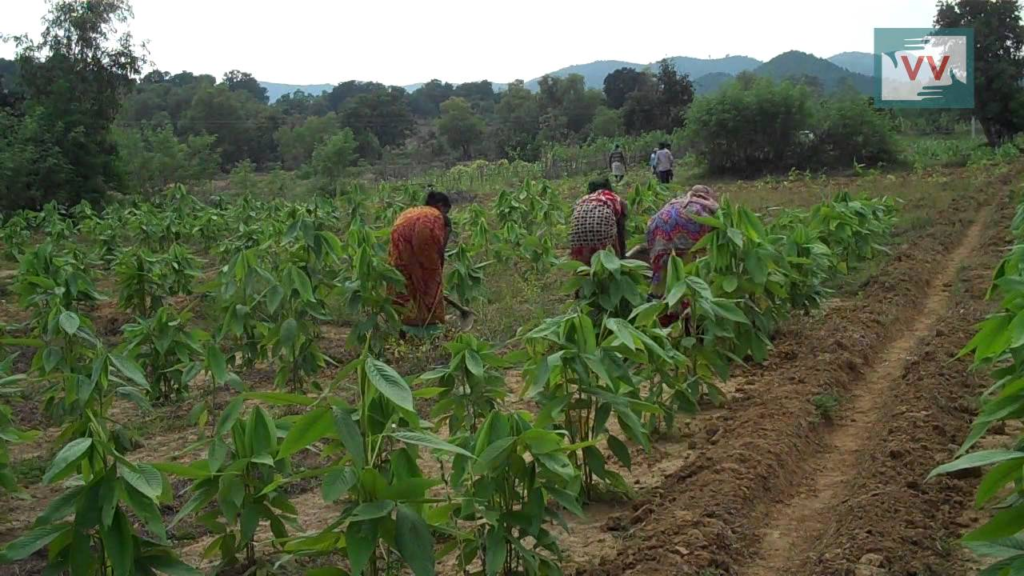
Cultivator.
Cultivate host plants for non-timber forest produce Lac Cultivator:
User / employee should be able to:
PC1. identify the type of trees /Lac Cultivator types of non-timber forest products such as planting area /
PC2 period. adjust the soil according to the type of plants that can handle and the environment in which
PC3 is grown. ensure pest and disease control by spraying pesticides and herbicides according to
PC4 statistics. collect healthy sterilized seeds from authorized
PC5 organizations. identify fast-growing and small-scale non-timber forest management trees that produce
PC6. plow the land and plant the seeds of hosted plants using the right Lac Cultivator tools and techniques.
PC7Cultivate plants to celebrate non-timber wood production. check the quality of the host crop to see
PC8 climate change. make irrigation according to the requirements of the
PC9 plant. identify and remove dead, diseased and broken branches of the
PC10 plant. perform harvesting and post-harvest harvesting operations using specific
PC11 tools and techniques. ensure that there is no adverse effect on the health of the plant and the farmer Lac Cultivator
A. Organizational Context (Knowledge of the company / organization and its processes):
The user / person at work needs to know and understand:
KA1. appropriate occupational Lac Cultivator health and safety requirements, job responsibilities and
KA2 obligations. you can approach him for support for information related to the work, specification and sponsorship of
KA3. the importance of adhering to health, hygiene, safety and quality standards as well
B. Technical Knowledge:
The user / person at work needs to know and understand:
KB1. suitable plants / shrubs suitable for Lac Cultivator non-timber forest produce
KB2. land reform
KB3. seed selection and planting methods
KB4. pest control and disease control
KB5. farming tools and strategies
KB6. life cycle of hosted trees
KB7. various planting climate parameters Parameters: Extremely high and very low temperatures, intensity and distribution of rain (rain), relative humidity, soil, etc.
Core Skills/ Generic Skills:
The user / person at work needs to know and understand how to do this:
SA1. write down work Lac Cultivator schedules in logs, registers, etc. in English or local language
SA2. fill in details of expenditure incurred, building materials, tools, etc. English or Home Lac Cultivator Language Learning Skills The user / person at work needs to know and understand how to do this:
SA3. read and understand instruction manuals / tools, etc. Oral communication (listening and speaking skills) The user / person at work needs to know and understand how to do this:
SA4. maintain an active
SA5 relationship. liaison: Fellow farmers and related organizations
SA6. seek timely advice from others / adults: Fellow farmers, affiliated organizations, and subject matter experts. Making Professional Skills Decisions The user / person at work needs to know and understand:
SB1. make decisions about the selection of non-sustainable plants, land preparation, methods, tools, etc. Plan and Organize The user / person at work needs to know and understand:
SB2. plan and plan the planting of non-timber plantations

Customer Location The user / person at work needs to know and understand how to do this:
SB3. use customer demand as a key component of production targeting Problem Solving The user / employee needs to know and understand:
SB4. manage relationships with co-farmers who may be stressed, frustrated, confused or angry with
SB5. think about the problem, test the possible solutions (s) Lac Cultivator and identify the (best) solutions for analytical thinking The user / employee needs to know and understand:
SB6. analyze non-timber forestry farming tools that produce Critical Thinking The user / employee needs to know and understand:
SB7. explore information collected from observation, experience, understanding / consultation or communication, as a guide to thought and practice Lac Cultivator
Select and prune host plants for lac cultivation Lac Cultivator:
User / employee should be able to:
PC1. select suitable tree species / species to catch lac in the cultivation of acres of cultivation Types: Pales (Butea monospermic), Kusum (Schleichera lease), Beer (Sisyphus Mauritians), Khari (Acacia catechu), Ghent (Sisyphus zylopyra), Mallari ( Shore taluka), Galant (Albizzias Lucida), Focus spp., Archer (Cabanas Cajon), Grewal spp.
PC2. ensure free air circulation around the host host for lac
PC3 quality production. identify fast-growing and low-maintenance trees sap44 sap. ensure a farming system for maximum use of non-foldable plant resources Prune trees for harvesting The user / person at work should be able to:
PC5. identify and adjust pruning time to adapt to plants that handle local conditions and conditions
PC6. pruning trees to get lots of sweet shoots to reduce the nutrition of lac insects Insect: Kerria lace
PC7. ensure new and healthy shoots for
PC8. select pruning pruning methods used methods Methods: Apical / light pruning or basal / heavy pruning
PC9. use appropriate pruning tools Tools: Secateurs – roll cut or French, pruning tall trees, pruning knives, cutting scissors, cutting trees, etc.
PC10. identify and remove dead, diseased and broken branches Lac Cultivator without damaging the plant / trees
Organizational Context (Knowledge of the company / organization and its processes):
The user / person at work needs to know and understand:
KA1. appropriate occupational health and safety requirements, job responsibilities and
KA2 obligations. you can approach him for support for information related to the work, specification and sponsorship of
KA3. the importance of compliance with health, hygiene, safety and quality standards and the impact of non-compliance on consumer and business
KA4. the right people and their responsibilities in the
KA5 farming area. documents and related procedures applicable to the context of the work


Technical KnowledgeOF Lac Cultivator:
The user / person at work needs to know and understand:
KB1. suitable capture plants where the lac insect thrives
KB2. pruning time and various methods of pruning Methods: Apical / light pruning or basal / heavy pruning
KB3. pruning tools and their use
KB4. the life cycle of lac insects attracts Strains: Ranging and Kasim
KB5. various weather parameters for lac cultivation Parameters: Extreme temperatures, intensity and distribution of rain (rain), relative humidity, etc Lac Cultivator.
Core Skills/ Generic Skills:
The user / person at work needs to know and understand how to do this:
SA1. write down work schedules in logs, registers, etc. in English or local language
SA2. fill in details of expenditure incurred, building materials, tools, etc. English or Home Language Learning Skills The user / person at work needs to know and understand how to do this:
SA3. read and understand instruction manuals / tools, etc. Oral communication (listening and speaking skills) The user / person at work needs to know and understand how to do this:
SA4. maintain an active
SA5 relationship. liaison: Fellow farmers and related organizations
SA6. seek timely advice from others / adults: Fellow farmers, affiliated organizations, and subject matter experts. Making Professional Skills Decisions The user / person at work needs to know and understand:
SB1. make decisions about the selection of plants to handle, types of pruning methods, tools, etc. Plan and Organize The user / person at work needs to know and understand how to do this:
SB2. plan and edit pruning activities
Customer Location The user / person at work needs to know and understand how to do this:
SB3. use customer demand as a key component of production targeting Problem Solving The user / employee needs to know and understand: SB4. manage relationships with co-farmers who may be stressed, frustrated, confused or angry with
SB5. think about the problem, test the possible solutions (s) and identify the (best) solutions for analytical thinking The user / person at work needs to know and understand:
SB6. analyze the tools for circumcision processes Essential Thinking The user / person at work needs to know and understand that:
SB7. explore information collected from observation, experience, understanding / thinking or communication, such as thought and action guidance
Inoculate host plants with broodlac for lac cultivation Lac Cultivator:
User / employee should be able to:
PC1. estimate the required borollic amount according to the plant size of
PC2. identify a non-insect lacquer rod with female insect repellent attached to PC / purchased
PC3. remove unwanted part of the broodlac rod without damaging the lac insecticides Install broodlac holding plants The user / person at work should be able to:
PC4. cut purchased / sliced broodlac sticks into small pieces with cutting tools Tools: Secateurs-roll cut or
PC5 French. a plethora of selected broodlac with nylon cords for each need and availability of tender shoots in
PC6 plant material. place broodlac lumps inside the specified nylon bags to reduce the use of small pieces and act as a means of protecting against enemy insect invasion Details: 60 nylon net net, paddy straw
PC7. tie the bundles of broodlac attached to the shoots to the branches of the host plants and the largest contact area PC8. ensure that broodlac bundles are kept in the plant to hold the full vaccination time: Installation time: 2-3 weeks
. PC9. check the settlement of lac insecticides in various areas vaccinated by broodlac
PC10. remove and collect all broodlac sticks used in the catch plant to prevent damage and attack by enemy insects Lac Cultivator
Organizational Context (Knowledge of the company / organization and its processes):
The user / person at work needs to know and understand:
KA1. appropriate occupational health and safety requirements, job responsibilities and
KA2 obligations. you can approach him for support for information related to the work, specification and sponsorship of
KA3. the importance of compliance with health, hygiene, safety and quality standards and the impact of non-compliance on consumer and business
KA4. the right people and their responsibilities in the
KA5 farming area. documents and related procedures applicable to the context of the work\
Lac Cultivator


B. Technical Knowledge:
The user / person at work needs to know and understand:
KB1. broodlac – a lac stick with worms that is expected to appear. time to apply broodlac for some kind of Problems: Ranging – October / November and June / July Kusum – June / July and January / February
KB3. full time to install inoculation KB4. removal of broodlac or “Punke” inactive
Core Skills/ Generic Skills:
The user / person at work needs to know and understand how to do this:
SA1. write down work schedules in logs, registers, etc. in English or local language
SA2. fill in details of expenditure incurred, building materials, tools, etc. English or Home Language Learning Skills The user / person at work needs to know and understand how to do this:
SA3. read and understand instruction manuals / tools, etc. Oral communication (listening and speaking skills) The user / person at work needs to know and understand how to do this:
SA4. maintain an active
SA5 relationship. liaison: Fellow farmers and related organizations
SA6. seek timely advice from others / adults: Fellow farmers, affiliated organizations, and subject matter experts.
Making Professional Skills Decisions The user / person at work needs to know and understand:
SB1. make decisions about broodlac selection, inoculation installation time, tools, etc. Plan and Edit The user / person at work needs to know and understand how to do this:
SB2. plan and organize Inoculation Centricity Customer activities The user / person on the job needs to know and understand that:
SB3. use customer demand as a key component of production targets Lac Cultivator
Lac Cultivator Troubleshooting The user / person at work needs to know and understand:
SB4. manage relationships with co-farmers who may be stressed, frustrated, confused or angry with
SB5. think about the problem, explore possible solutions and find the biggest / best solutions for analytical thinking The user / person at work needs to know and understand:
SB6. analyze the vaccination process Important Thinking The user / person at work needs to know and understand that:
SB7. explore information collected from observation, experience, understanding / thinking or communication, as a guide to thought and practice

Undertake harvest and post-harvest techniques for lac cultivation Lac Cultivator:
User / employee should be able to:
PC1. identify dead and living implants in broodlac
PC2. harvest broodlac looking at the timing of the larvae and the planting season Seasons: Summer — harvested a week before the emergence of the Winters worm – harvested by the emergence of the
PC3 worm. cut broodlac active and inactive using harvesting tools Tools: Secateurs or long-term long-term plant Create harvesting strategies after lac cultivation The user / person at work should be able to:
PC4. select a suitable storage area for active broodlac to allow adequate aeration, e.g. shed shed
PC5. make sure the active broodlac is used to apply the drug to lac plants to grow
PC6. discarded broodlac and rods with lac cell dispersed or using
PC7 machines. ensure easy separation of lac sticks using appropriate tools and building materials Tools and materials: Wipe a knife or pedal with a lac scraper, water, clean flour, plastic sheet, rope, etc.
PC8. they underwent lac drying in the open air to obtain the lowest humidity of
PC9. process the lac rod by washing with an alkaline solution to clean all
PC10 impurities. produce shellac in a variety of ways Methods: Hand-made world process or heating process or solvent
PC11 process. ensure the proper packaging and storage of sticklac or lac-processed lac and non-functional broodlac sticks, for a variety of industrial purposes Lac Cultivator
Organizational Context (Knowledge of the company / organization and its processes):
The user / person at work needs to know and understand:
KA1. appropriate occupational health and safety requirements, job responsibilities and
KA2 obligations. you can approach him for support for information related to the work, specification and sponsorship of
KA3. the importance of compliance with health, hygiene, safety and quality standards and the impact of non-compliance on consumer and business
KA4. the right people and their responsibilities in the
KA5 farming area. documents and related procedures applicable to the context of the work Lac Cultivator
B. Technical Knowledge Lac Cultivator:
The user / person at work needs to know and understand:
KB1. active and inactive broodlac
KB2. basic composition of adhesive adhesives: Lac resin, lac wax, lac dye, etc
. KB3. basic properties of lac Properties: Melting, resistivity, adhesion environment, etc.
KB4. harvesting tools, building materials and methods
KB5. different quality parameters of lac parameters: Color, lac type, lac density, etc.
KB6. different processing methods of lac
KB7. storage and packaging of lac
KB8. the use of lac in various industrial sectors Categories: Paint, electricity, car, cosmetics, glue, leather, varnish and polishing, food processing, medical, printing, manufacturing, textiles, etc.
KB9. safe working methods for harvesting lac
A. Core Skills/ Generic Skills:
The user / person at work needs to know and understand how to do this:
SA1. write down work schedules in logs, registers, etc. in English or local language
SA2. fill in details of expenditure incurred, building materials, tools, etc. English or Home Language Learning Skills The user / person at work needs to know and understand how to do this:
SA3. read also un
SA4. remove instruction manuals / building materials, etc. Oral communication (listening and speaking skills) The user / person at work needs to know and understand how to do this:
SA5. maintain an active working relationship
SA6. liaison: Fellow farmers and related organizations
SA7. seek timely advice from others / adults: Fellow farmers, affiliated organizations, and subject matter experts. Making Professional Skills Decisions The user / person at work needs to know and understand:
SB1. make decisions to identify active and inactive broodlac, harvest time, tools, building materials, methods, etc. Plan and Organize The user / person at work needs to know and understand:
SB2. plan and organize harvesting activities Customer Centricity The user / individual at work needs to know and understand how to do this:
SB3. use customer demand as a key element of the
SB4 problem-solving production target. manage relationships with co-farmers who may be stressed, frustrated, confused or angry with
SB5. think about the problem, explore possible solutions and find the biggest / best solutions for analytical thinking The user / person at work needs to know and understand:
SB6. analyze the process and strategies for harvesting Critical Thinking The user / person at work needs to know and understand that:
SB7. explore information collected from observation, experience, understanding / thinking or communication, as a guide to thought and practice Lac Cultivator
Guidelines for Assessment:
- Criteria for assessment for each Qualification Pack will be created by the Sector Skill Council. Each Performance
Criteria (PC) will be assigned marks proportional to its importance in NOS. SSC will also lay down proportion of marks
for Theory and Skills Practical for each PC. - The assessment for the theory part will be based on knowledge bank of questions created by the SSC.
- Individual assessment agencies will create unique question papers for theory part for each candidate at each Lac Cultivator
examination/training center (as per assessment criteria below). - Individual assessment agencies will create unique evaluations for skill practical for every student at each
examination/training center based on this criteria Lac Cultivator. - To pass the Qualification Pack, every trainee should score a minimum of 70% in aggregate.
- In case of successfully passing only certain number of NOS’s, the trainee is eligible to take subsequent assessment
on the balance NOS’s to pass the Qualification Pack.

